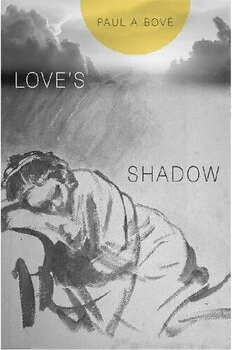
Love's Shadow PDF
Preview Love's Shadow
love’s shadow LOV E’S SH A DOW PAUL A. BOV É Cambridge, Mas sa chu setts London, England 2021 Copyright © 2021 by the President and Fellows of Harvard College All rights reserved Printed in the United States of Amer i ca First printing Cover art: (top) turtix/iStock/Getty Images Plus; (bottom) Rembrandt van Rijn (1609-1669), Young woman sleeping on her right arm (Hendrickje Stoffels), c. 1654. Brush drawing in brown wash, with some white bodycolor. © The Trustees of the British Museum Cover design: Jill Breitbarth 9780674249875 (EPUB) 9780674247628 (MOBI) 9780674247635 (PDF) The Library of Congress has cataloged the printed edition as follows: Names: Bové, Paul A., 1949– author. Title: Love’s shadow / Paul A. Bové. Description: Cambridge, Massachusetts : Harvard University Press, 2021. | Includes bibliographical references and index. Identifiers: LCCN 2020011256 | ISBN 9780674977150 (cloth) Subjects: LCSH: Criticism. | Intellectual life. | Poetry. | Melancholy. Classification: LCC PN81 .B62 2021 | DDC 808.1—dc23 LC record available at https://lccn.loc.gov/2020011256 For the reader within Contents Preface ix 1. The Path of Sorrows: Messianism, Apocalypse, and Allegory: The Misprisions of Utopia 1 2. The Will to Destruction as the Basis of Allegory: With Creativity and Love 25 3. A Socratic Interlude 69 4. Wallace Stevens and the Confidence of Imagination 111 5. Adorno 135 6. An Interchapter 185 7. “The Auroras of Autumn” 213 8. Rembrandt, Bathsheba, and the Textures of Art 283 9. “What Think You of Falling in Love?” 333 Notes 379 Acknowl edgments 429 Index 433 Preface Freud’s essay on melancholy makes two points helpful to understanding the work I have done in this book. First, melancholy persists when desire has lost its love object, even or especially when the object has perhaps only died to the consciousness of the desirer. Second, melancholy becomes an affliction when the subject unable to reproach the lost love object turns re- proach upon itself to dwell in misery and abjection. Walter Benjamin cre- ated the most dominant critical and intellectual myth of the twentieth century, namely that in a secularized creation, history becomes merely natu ral history, and melancholy becomes the ruling emotion of even the most contemplative life. All this took place in the space of what once had been Christ ian ity. In a creation bereft of a creator, melancholy is not merely inescapable but essential and permanent. The stylistic name Benjamin gave to this state is “Baroque,” and its narrative experiential mode is allegory, reduced especially in the American acade my to the redundancy of allego- resis, the reading of all materials as allegories. Fredric Jameson’s commit- ment to allegory and the willingness of the university literary profession to award him all the honors offered by the Modern Language Association and far more— this marks the generalized absorption of a scholastic opinion within the guardian institutions of culture and society. According to this story, all humanity is abject, and all history is ruin- ation. Human agency is suspect or pointless, and the divine is either be- seeched or its absence lamented. Utopia subsumes desire to its own ends, which substitute for politics, while happily wrapping itself in the rhe toric of “the pol iti cal.” Imagination falls to the tertiary role of cleverness, that ix
